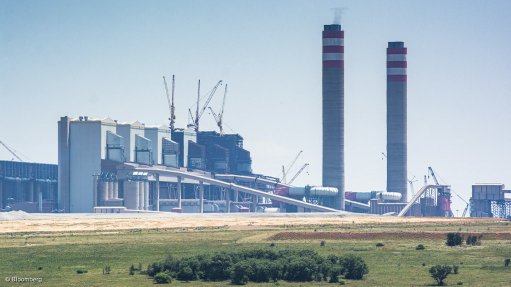
Photo by: Bloomberg
Finance Minister Tito Mboweni announced on Wednesday that R16.4-billion would be allocated to South African Airways (SAA) over the medium term to “repay the airline’s guaranteed debt and to cover debt-service costs”.
Speaking to lawmakers, Mboweni said the “SAA Sword of Damocles has now fallen on us”, referring to the decision, made in December, to place the struggling national carrier into voluntary business rescue as a result of its inability to meet financial obligations.
Without repeating his well-publicised misgivings about providing continued support for SAA, the Minister said it was the “sincere hope of many that this intervention will lead to a sustainable airline that is not a burden to the fiscus”.
The costs of the R16.4-billion adjustment were still being finalised and would be financed from existing provisional allocations for State-owned companies, the National Treasury said in the Budget Review released along with the Budget.
The review also revealed that, since 2008/09, SAA had incurred net losses of over R32-billion.
ESKOM SUPPORT?
No further allocations were made to power utility Eskom, nor did the Budget outline a possible debt-relief plan for the struggling State-owned company (SOC), which had been identified as the largest risk to the economy and the fiscus.
Last year, government announced support of R230-billion over a ten-year period to Eskom, with transfers of R49-billion made in 2019/20.
Mboweni described as “helpful and constructive” a recent Congress of South African Trade Unions (Cosatu) proposal that public worker pension funds be used to lower Eskom’s R454-billion debt burden.
However, he said that any scheme to convert debt-to-equity should not be limited to public-sector pension funds and described the Cosatu proposal as an indication of growing consensus on the need for private participation in Eskom and other SOCs.
The Budget Review indicated that, over the past 12 years, government has allocated R162-billion to financially distressed SOCs, with Eskom accounting for 82% of that amount.
The National Treasury expected electricity shortages to continue to constrain growth over the next three years, but said that energy expenditure is expected to total R150-billion, accounting for one-fifth of total infrastructure spending over the period.
“Government will do ‘whatever it takes’ to ensure a stable electricity supply,” Mboweni said, adding that the current electricity shortfall would ease as Eskom finished critical maintenance.
He said that renewables projects procured under Bid Window 4 of the Renewable Energy Independent Power Producer Procurement Programme were being accelerated and that the rapid decline in renewable energy prices would give new momentum to Bid Window 5.
“Determinations to implement the Integrated Resource Plan of 2019 are finalised and await the concurrence of the National Energy Regulator. It will shortly be possible for municipalities in financially good standing to purchase electricity from independent power producers,” he added.